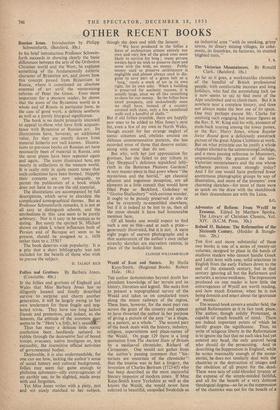OTHER RECENT BOOKS
Russian Icons. Introduction by Philipp Schweinfurth. (Batsford. 30s.) IN his brief introduction Professor Schwein- furth succeeds in showing clearly the basic differences between the arts of the Orthodox Christian world and the West; he explains something of the fundamentally esoteric character of Byzantine art, and shows how this concept passed from Byzantium to Russia, where it constituted an absolute essential of art until the westernising• reforms of Peter the Great. Even more important for a "stern reader, . he shows that the icons of the Byzantine world as a whole and of Russia in particular have, in the case of good work, a definite aesthetic as well as a purely liturgical significance. The book is no doubt primarily intended to appeal to those who have little acquain- tance with Byzantine or Russian art. Its illustrations have, however, an additional value, for they are mostly drawn from material hitherto not well known. Illustra- tions to previous books on Russian art have necessarily been of material in Russia, and the same plates have been repeated again and again. The icons illustrated here, are mostly in collections in the western world. It is really only in quite recent times that such collections have been formed. Happily their contents are now adequate, to permit the publication of a book which does not have to re-use the old material.
The illustrations are accompanied by full descriptions, which serve to elucidate the complicated iconographical themes. But as Professor Schweinfurth remarks, it is not at all easy to distinguish schools, and the attributions in this case seem to be purely arbitrary. Nor is it easy to be certain as to dating. But surely the spirited St. Michael shown on plate I, where influences both of Persian and of Baroque art seem to be present, should be assigned to c. 1650 rather than to c. 1550 ?
The book deserves wide popularity. It is a pity that a short bibliography was not included for the benefit of those who wish to pursue the subject.
D. TALBOT RICE










































 Previous page
Previous page